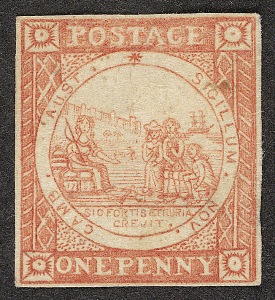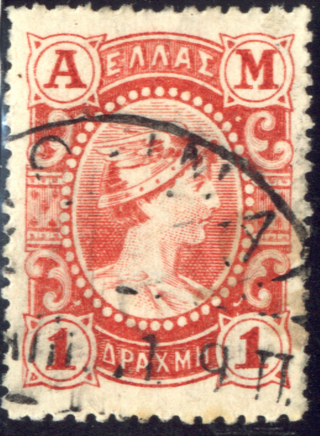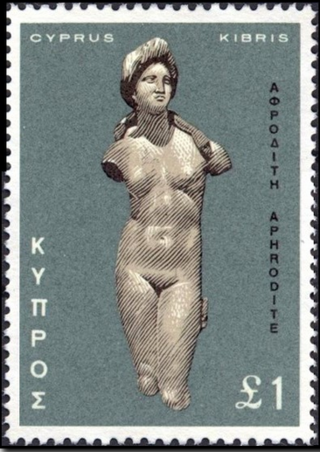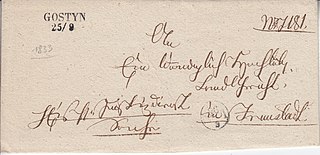This article has no lead section .(December 2023) |
This article has no lead section .(December 2023) |
The beginning date for postal history in Algeria is unclear, but letters sent by Europeans in Algiers go back to 1690. Oran was controlled by Spain during much of the 18th century, and a postal marking is known from 1749.
Regular postal service came in with the French rule in Algeria, initially as a military post established in 1830 in Algiers, which was then opened to civilians in 1835, but still using military handstamps until 1839, after which datestamps with town names became standard. The service expanded into the interior along with French control, with 295 post offices in operation by 1880.



Algerian mail used stamps of France beginning 1 January 1849. Early cancellations were a simple grill similar to French usage, but after 1852 the service switched to a lozenge of dots surrounding a number identifying the post office.

Beginning in 1924, French stamps were overprinted "ALGÉRIE", eventually to total some 32 types over the next few years. These were superseded in 1926 by the first stamps inscribed for Algeria, the series consisting of four typographed designs showing local scenes, and ultimately consisting of 35 types, ranging from 1 centime to 20 francs. [1] Algeria's first commemorative stamp, a 10-franc value depicting the Bay of Algiers, marked the 100th anniversary of French control. A new definitive series in 1936 again depicted local scenery, using eight engraved designs for 31 values.
In 1942, a photolithographed set featured the arms of Algerian cities, and was issued both with and without the engraver's name in the lower left margin. Following the liberation of France, stamps were issued depicting Marianne and the Gallic cock, in designs similar to French stamps; in addition, the old "ALGÉRIE" overprint was revived and applied to French stamps until 1947.
In 1947, a new set of 16 definitives also featured city coats of arms, and remained in use throughout the 1950s, along with a handful of commemoratives. Algeria reverted to the use of French stamps between 1958 and 1962.
Independent Algeria started its own stamp programme on 2 July 1962, with locally applied overprints reading "EA" on stocks of French stamps. These overprints exist in a wide variety of colours and typefaces. These continued in use until 31 October 1962, and were superseded the following day by a set of five designs showing local scenes, and inscribed "REPUBLIQUE ALGERIENNE" in both French and Arabic (the first appearance of Arabic on Algerian stamps).
Algeria's definitive series since independence include a set showing occupations in 1964, a depiction of Abd-el-Kader in 1967, and multiple issues showing local views starting in 1982.
French postal stationery envelopes, newspaper wrappers, letter cards and postcards were also overprinted "ALGÉRIE" and issued in 1924. These were followed by postal stationery printed for Algeria in 1927. Envelopes, newspaper wrappers and lettercards were discontinued in the early 1940s. [2] [3]
When Algeria became an independent republic in 1962 the only item of postal stationery to be issued was a postcard. Subsequently, in 1976 Algeria issued aerogrammes. [2] [3]
East Africa and Uganda Protectorates was the name used by the combined postal service of the British protectorates, British East Africa and Uganda, between 1 April 1903 and 22 July 1920.
"French Colonies" is the name used by philatelists to refer to the postage stamps issued by France for use in the parts of the French colonial empire that did not have stamps of their own. These were in use from 1859 to 1906, and from 1943 to 1945.

This is an overview of the postage stamps and postal history of Australia.

This is a survey of the postage stamps and postal history of New South Wales, a former British colony now part of Australia.
This is a survey of the postage stamps and postal history of the German territory of the Saar. As a border region contested between France and Germany, the Saar has a somewhat complicated philatelic history.

Greece's first postal service was founded in 1828, at the time of Greek independence from the Ottoman Empire. This initial service continued mail delivery and, later, the issuing of postage stamps until 1970. It was then succeeded by the Hellenic Post S.A., which remains Greece's official postal provider. The first Greek stamps were issued in 1861; by then, the postal service had expanded to operate 97 branches.
This is a survey of the postage stamps and postal history of British East Africa.

The British Central Africa Protectorate existed in the area of present-day Malawi between 1891 and 1907.

The history of the postage stamps and postal history of China is complicated by the gradual decay of Imperial China and the years of civil war and Japanese occupation in the 1930s and 1940s. In modern times, postal delivery is handled by China Post.

The postal history of the Bahamas begins in the 18th century, with the first post office operating since 1733. The earliest known letters date from 1802. In 1804 a straight-line "BAHAMAS" handstamp came into use. The Royal Mail Line initiated a regular mail service in 1841, and from 1846 used a "Crown Paid" handstamp along with a dated postmark for New Providence.

The postage stamps of Ireland are issued by the postal operator of the independent Irish state. Ireland was part of the United Kingdom of Great Britain and Ireland when the world's first postage stamps were issued in 1840. These stamps, and all subsequent British issues, were used in Ireland until the new Irish Government assumed power in 1922. Beginning on 17 February 1922, existing British stamps were overprinted with Irish text to provide some definitives until separate Irish issues became available. Following the overprints, a regular series of definitive stamps was produced by the new Department of Posts and Telegraphs, using domestic designs. These definitives were issued on 6 December 1922; the first was a 2d stamp, depicting a map of Ireland. Since then new images, and additional values as needed, have produced nine definitive series of different designs.

The postal history of Malta began in the early modern period, when pre-adhesive mail was delivered to foreign destinations by privately owned ships for a fee. The earliest known letter from Malta, sent during the rule of the Order of St John, is dated 1532. The first formal postal service on the islands was established by the Order in 1708, with the post office being located at the Casa del Commun Tesoro in Valletta. The first postal markings on mail appeared later on in the 18th century.

This is a survey of the postage stamps and postal history of Montenegro.

Mauritius, a small island in the southwest Indian Ocean, is important to the world of philately for a number of reasons. Its first two postage stamps issued in 1847, called the "Post Office" stamps, are of legendary rarity and value. They were the first stamps issued in any part of the British Empire outside of Great Britain. The unique cover bearing both “Post Office” stamps has been called "la pièce de résistance de toute la philatélie" or "the greatest item in all philately". The cover was sold at auction, in Zurich, on 3 November 1993, for 5.75 million Swiss francs, the equivalent of about $4 million – the highest price ever paid for a single philatelic item up to that time. In addition, Mauritius is well known for the subsequent locally produced issues known as "primitives," also prized by collectors.

This is a survey of the postage stamps and postal history of Cyprus. The country's postal history is intricately linked to the island's political past.

Germania stamps are definitive stamps that were issued by the German Empire and the Weimar Republic between 1900 and 1922, depicting Germania. They represent the longest running series in German philately and are in their many variations and derivations an essential part of German philatelic collections.

This is a survey of the postage stamps and postal history of Gibraltar.
Antigua was discovered by Christopher Columbus, in 1493, and was named after the church of Santa Maria la Antigua in Seville. It was first settled in 1632. By the Treaty of Breda in 1667 it became a British Possession.
This is a survey of the postage stamps and postal history of British Bechuanaland.

Poczta Polska, the Polish postal service, was founded in 1558 and postal markings were first introduced in 1764. The three partitions of Poland in 1772, 1793 and 1795 saw the independent nation of Poland disappear. The postal services in the areas occupied by Germany and Austria were absorbed into those countries' postal services. In 1772 the area occupied by Austria was created into the Kingdom of Galicia, a part of the Austrian Empire. This lasted till 1918. The Duchy of Warsaw was created briefly, between 1807 and 1813, by Napoleon I of France, from Polish lands ceded by the Kingdom of Prussia under the terms of the Treaties of Tilsit. In 1815, following Napoleons' defeat in 1813, the Congress of Vienna, created Congress Poland out of the Duchy of Warsaw and also established the Free City of Kraków. Congress Poland was placed under the control of Russia and the postal service was given autonomy in 1815. In 1851 the postal service was put under the control of the Russian post office department regional office in St Petersburg. In 1855 control was restored for a while to the Congress Kingdom but following the uprising in 1863 again came under Russian control from 1866 and continued until World War I. In November 1918 the Second Polish Republic was created.